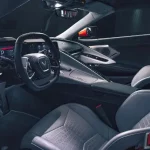Vintage cars hold a special place in the hearts of automotive enthusiasts and collectors. These timeless treasures are not just about the roaring engines and iconic exteriors; their interiors are equally captivating, reflecting the craftsmanship and design sensibilities of a bygone era.
However, the ravages of time can take a toll on these classic car interiors. Restoring them to their former glory is a labor of love that involves reviving the vintage charm while ensuring modern comforts. In this article, we’ll explore the art and passion behind restoring vintage car interiors.
The Allure of Vintage Car Interiors
Vintage car interiors exude a charm and elegance that’s often missing in today’s vehicles. From the rich aroma of aged leather to the intricate wood paneling and classic instrument clusters, every element tells a story of automotive history. These interiors are a testament to a time when cars were more than just transportation; they were symbols of status, luxury, and craftsmanship.
Challenges of Restoration
Restoring a vintage car interior is not for the faint of heart. It requires meticulous attention to detail and a deep appreciation for the original design. Here are some of the challenges involved:
**1. Sourcing Authentic Materials:** Finding period-correct materials can be a daunting task. Whether it’s the right type of leather, fabric, or wood veneer, authenticity is key to maintaining the vintage aesthetic.
**2. Precision Craftsmanship:** Restoring intricate details like hand-stitched upholstery or ornate dashboard components demands skilled craftsmanship. Many restorers rely on artisans who specialize in traditional techniques.
**3. Preserving Originality:** While restoration often involves replacing worn or damaged parts, the goal is to preserve as much of the original interior as possible. This means carefully repairing rather than replacing whenever feasible.
**4. Upholding Safety Standards:** Modern safety standards may require modifications like seatbelt installation or improved padding without compromising the vintage look.
**Steps in Vintage Car Interior Restoration**
**1. Evaluation:** The restoration process begins with a thorough assessment of the car’s interior. This includes documenting the existing condition, identifying areas of wear and damage, and determining the level of restoration needed.
**2. Disassembly:** The interior is carefully disassembled, with each component labeled and documented for later reassembly. This step allows for a closer examination of hidden issues.
**3. Cleaning and Repair:** Cleaning is a meticulous process, often involving the removal of decades-old grime and stains. Damaged or worn materials are repaired or replaced as needed.
**4. Upholstery:** Restoring vintage upholstery involves selecting period-appropriate fabrics or leathers, ensuring color accuracy, and replicating intricate patterns and stitching. Skilled upholsterers bring the seats, headliner, and door panels back to life.
**5. Woodwork:** Wooden elements like dashboards and trim are carefully stripped, repaired, and refinished. Skilled woodworkers use traditional techniques to achieve an authentic appearance.
**6. Chrome and Metal:** Chrome and metal parts are cleaned, polished, and re-plated to restore their shine and luster.
**7. Electrics and Instruments:** Vintage car interiors often feature analog instruments and electrical components. These are meticulously repaired or replaced to ensure accuracy and functionality.
**8. Final Assembly:** The interior components are reassembled, paying close attention to every detail. This step requires precision and patience to ensure a seamless fit and finish.
**Preserving Vintage Values**
Restoring a vintage car interior goes beyond the physical components; it’s about preserving history and honoring the craftsmanship of the past. Many restoration enthusiasts adhere to a code of authenticity, aiming to keep the car as close to its original state as possible. The goal is not just to create a visually appealing interior but to capture the essence of a particular era in automotive design.
**The Reward of Restoration**
Restoring vintage car interiors is a labor-intensive and often costly endeavor. However, the reward is the privilege of driving or showcasing a piece of automotive history that transports both the driver and onlookers back in time. The sight, smell, and touch of a beautifully restored vintage car interior evoke nostalgia and a sense of connection to the past.
In the world of classic cars, the magic isn’t just in the drive; it’s in the meticulous restoration that breathes new life into vintage interiors, preserving their charm and elegance for generations to come.


